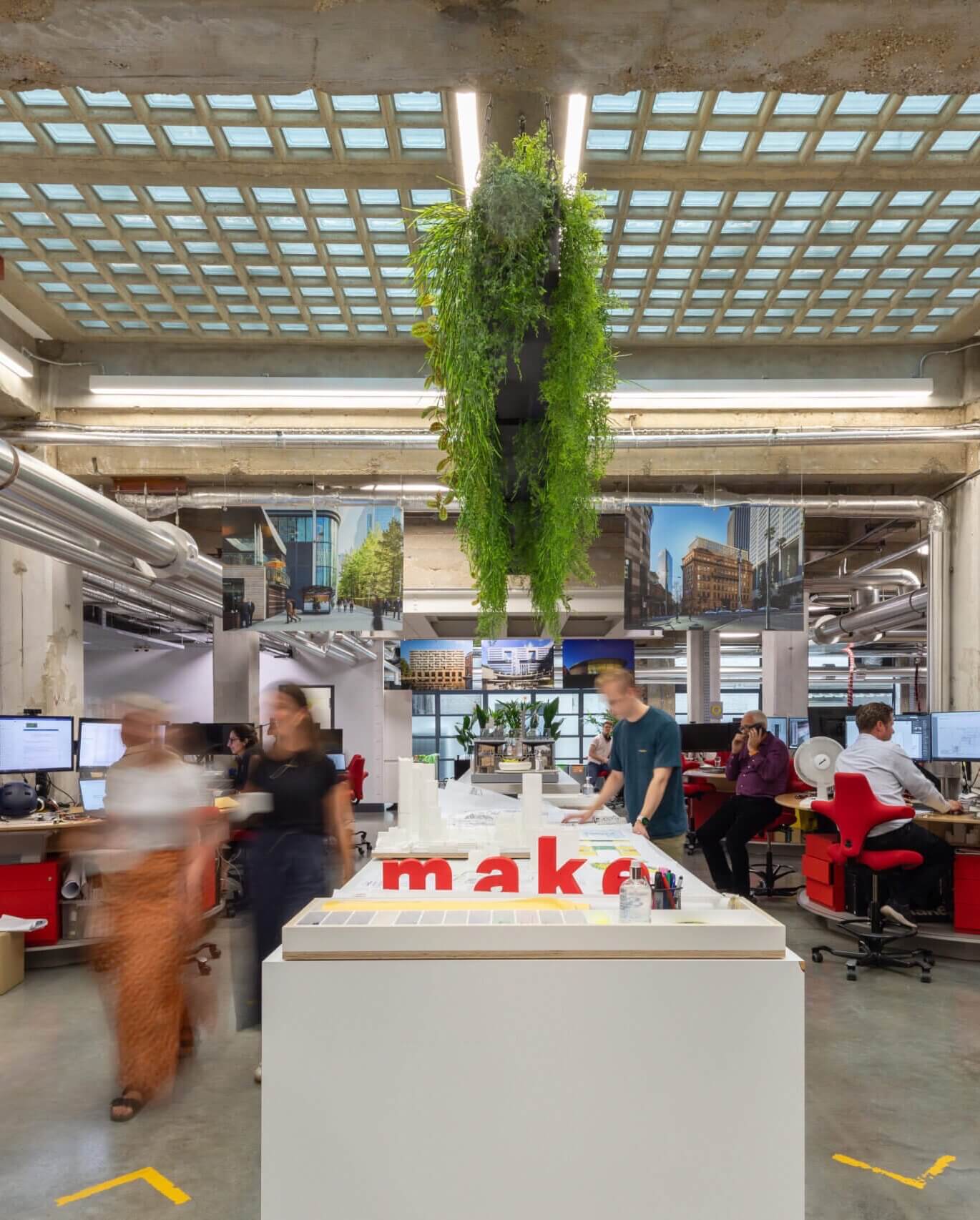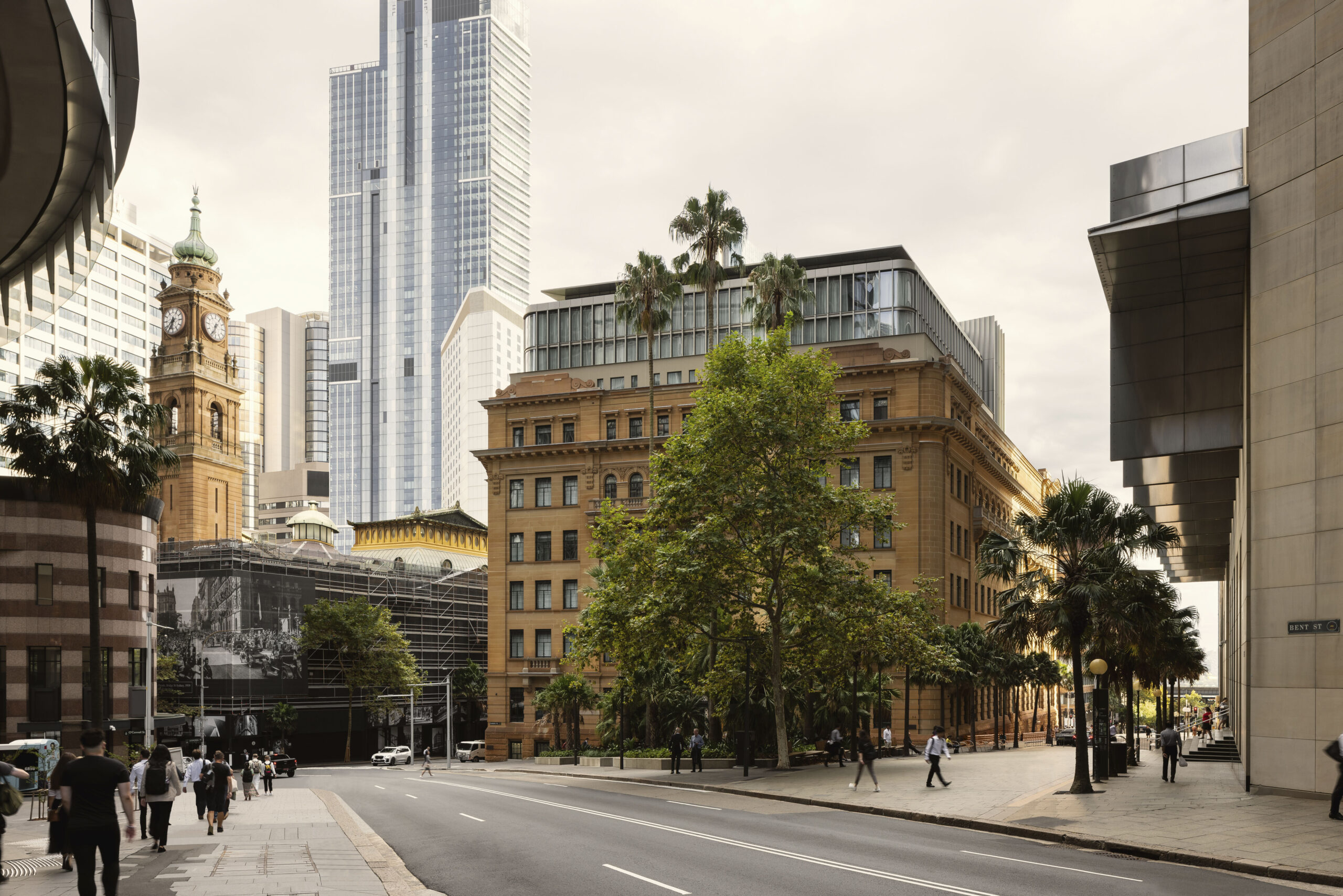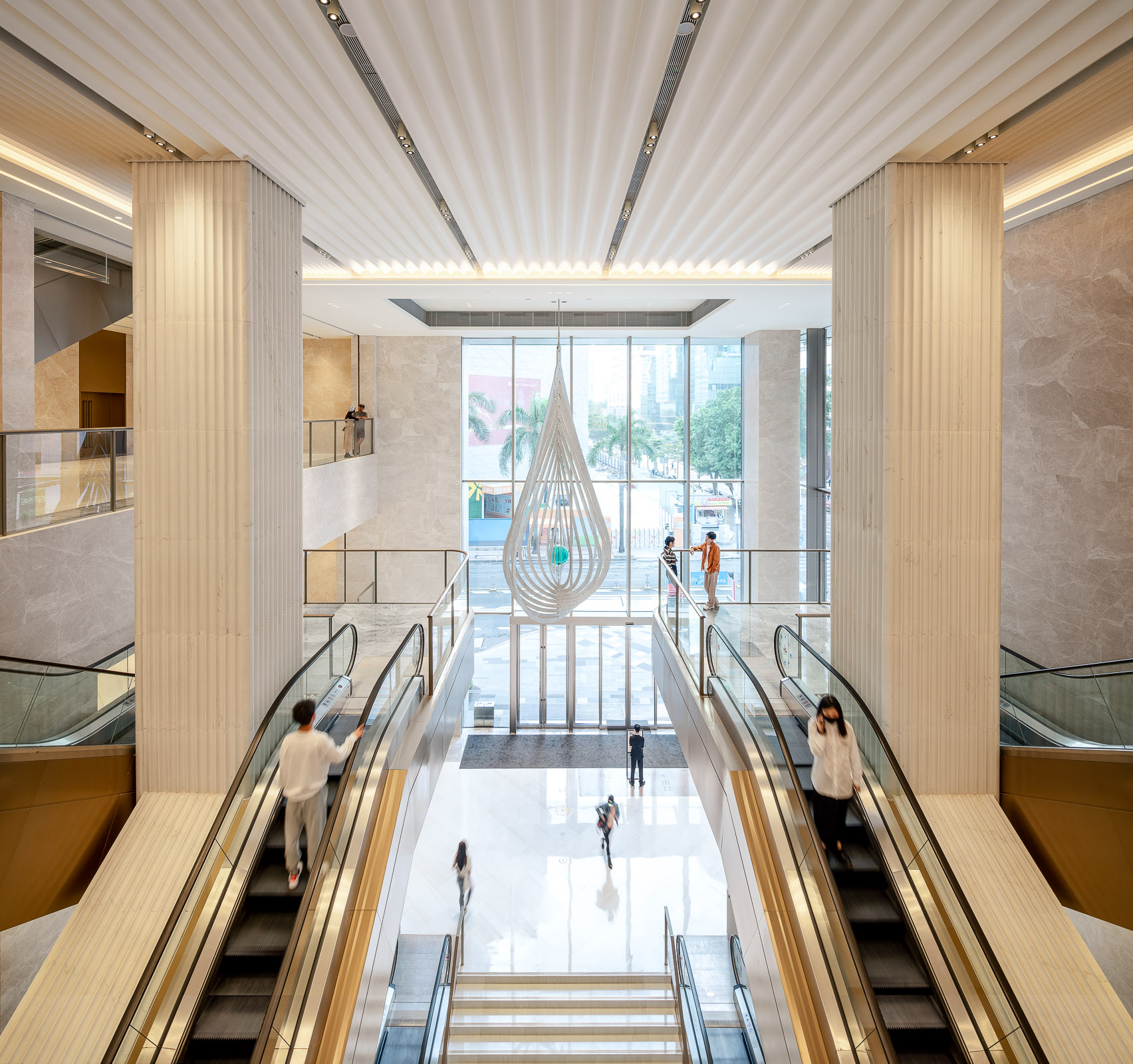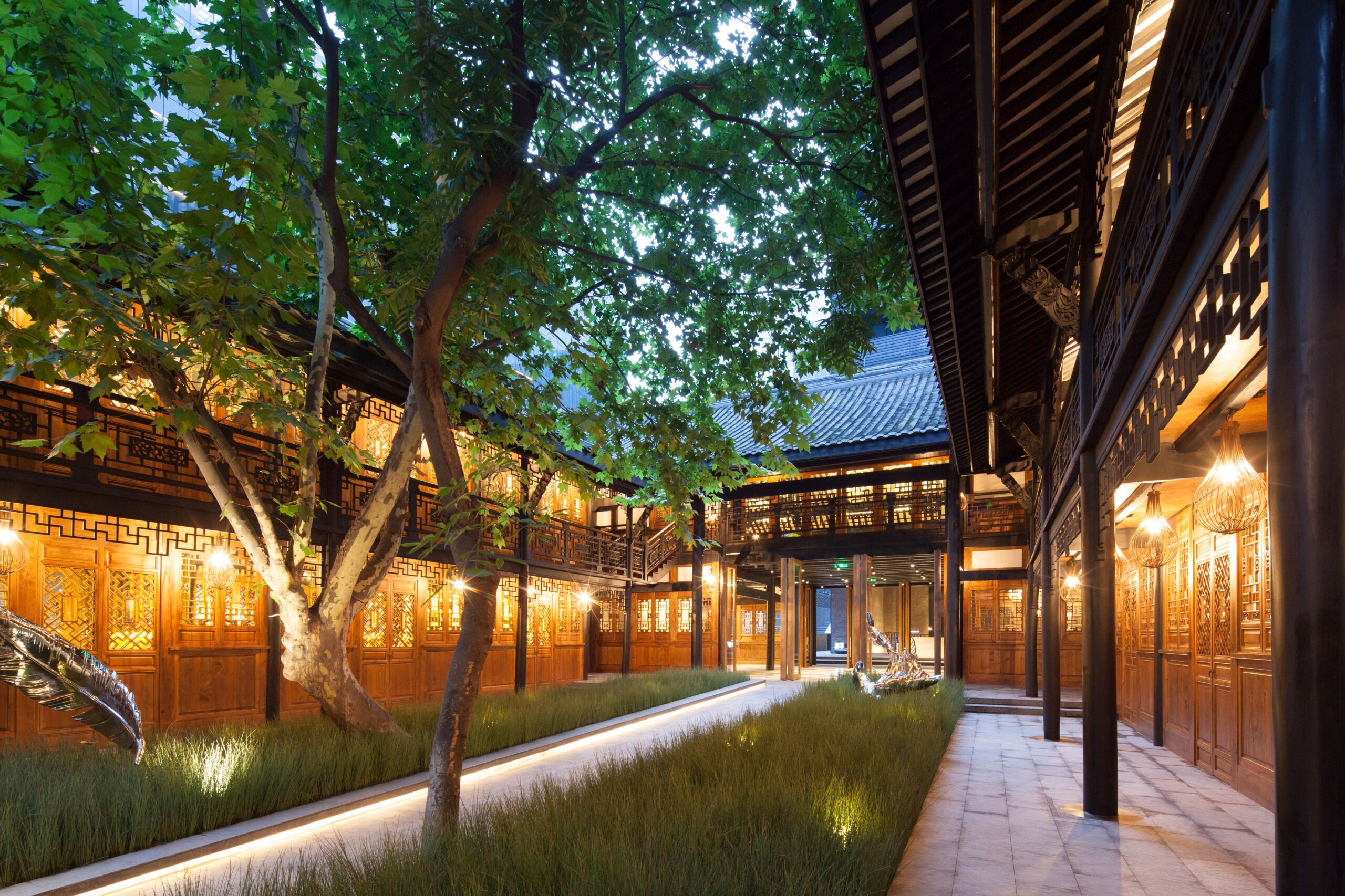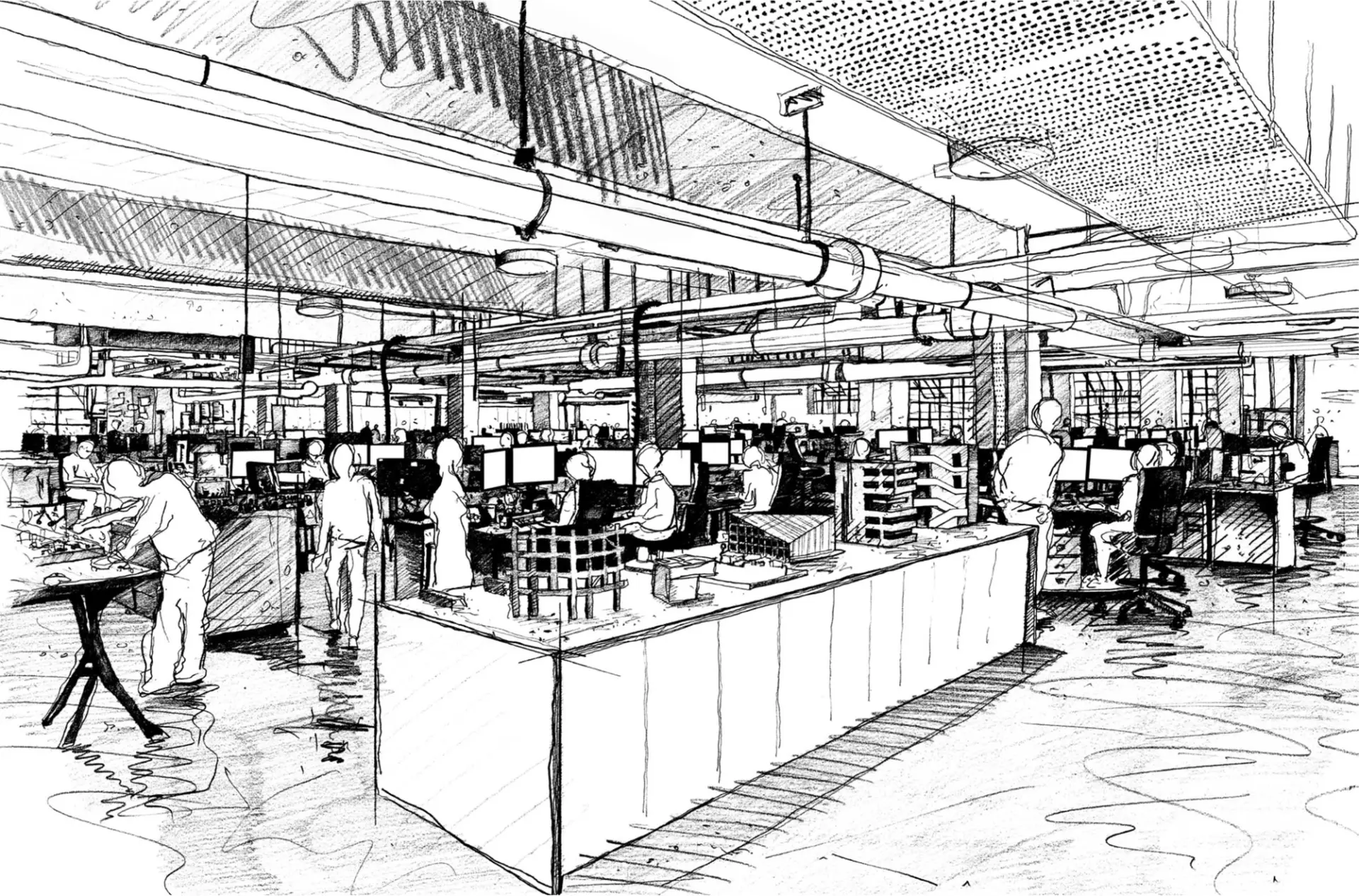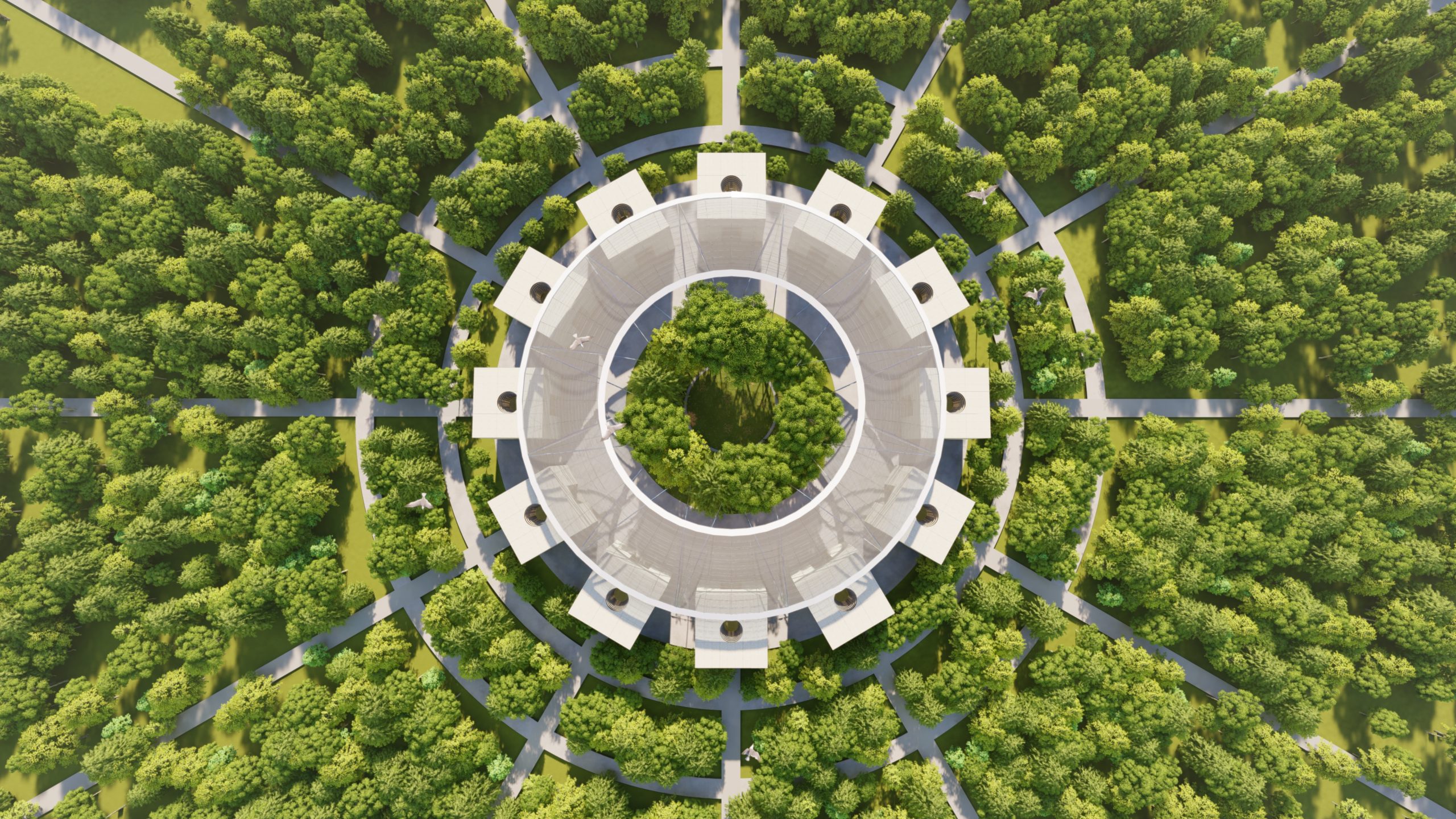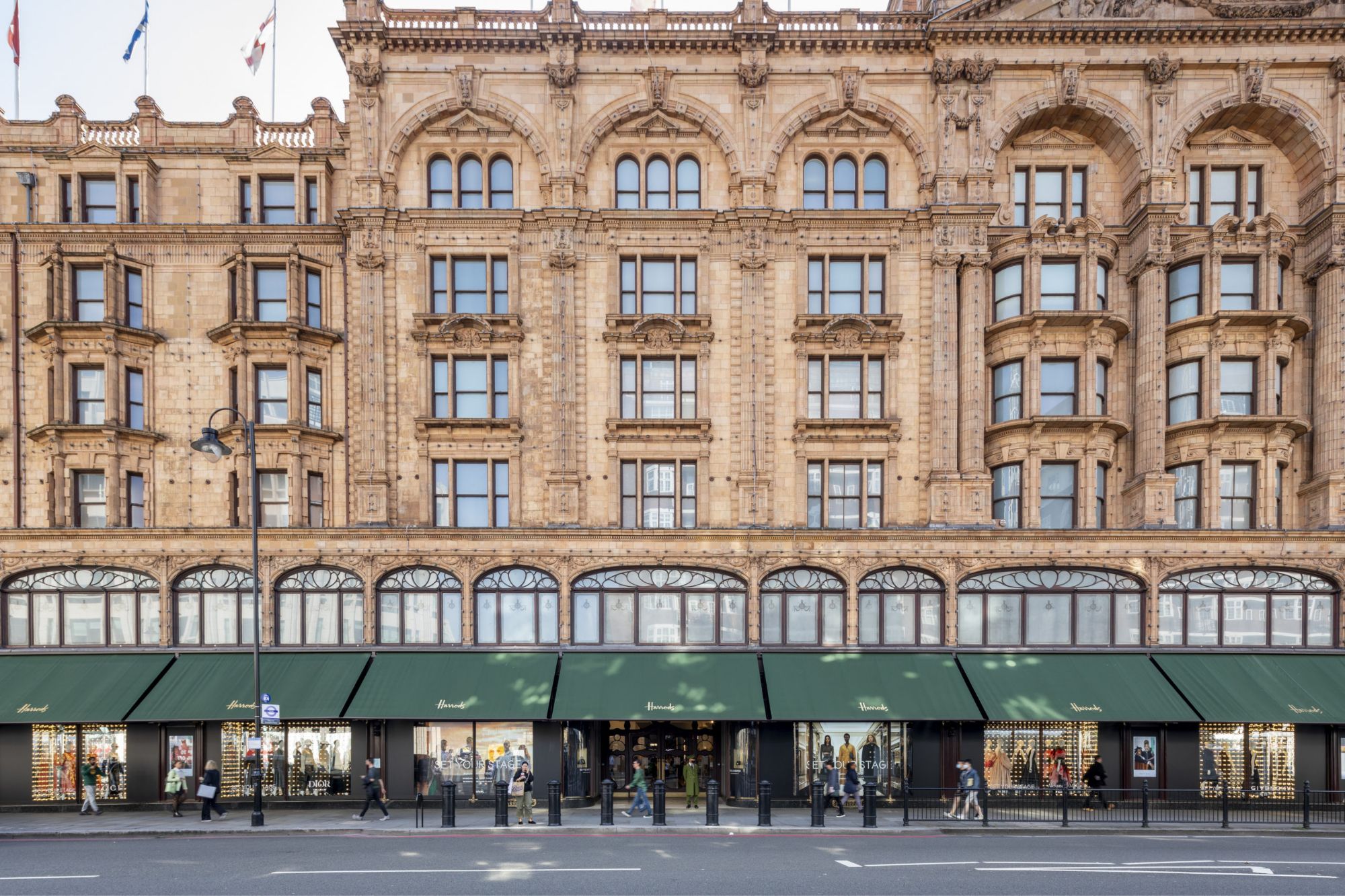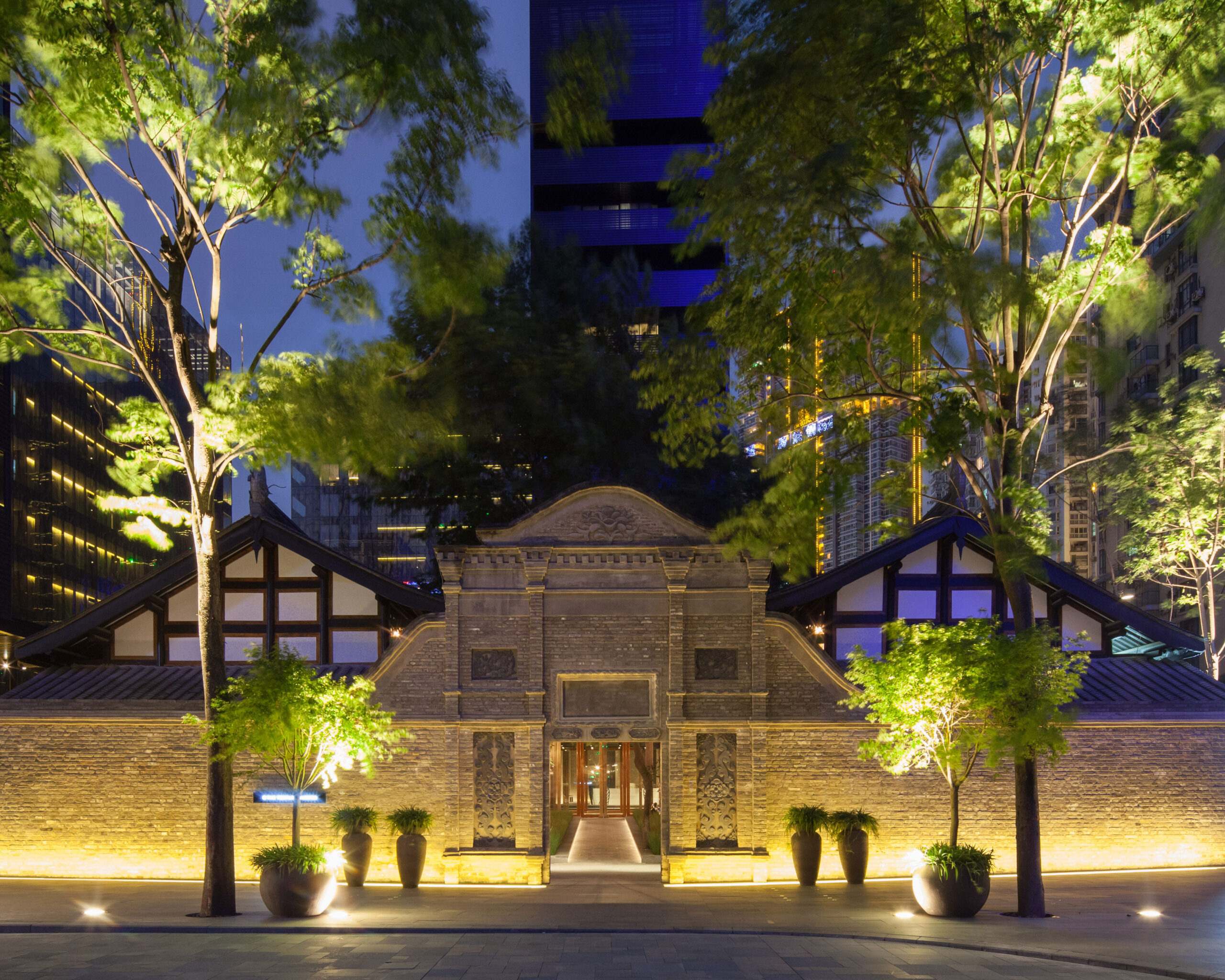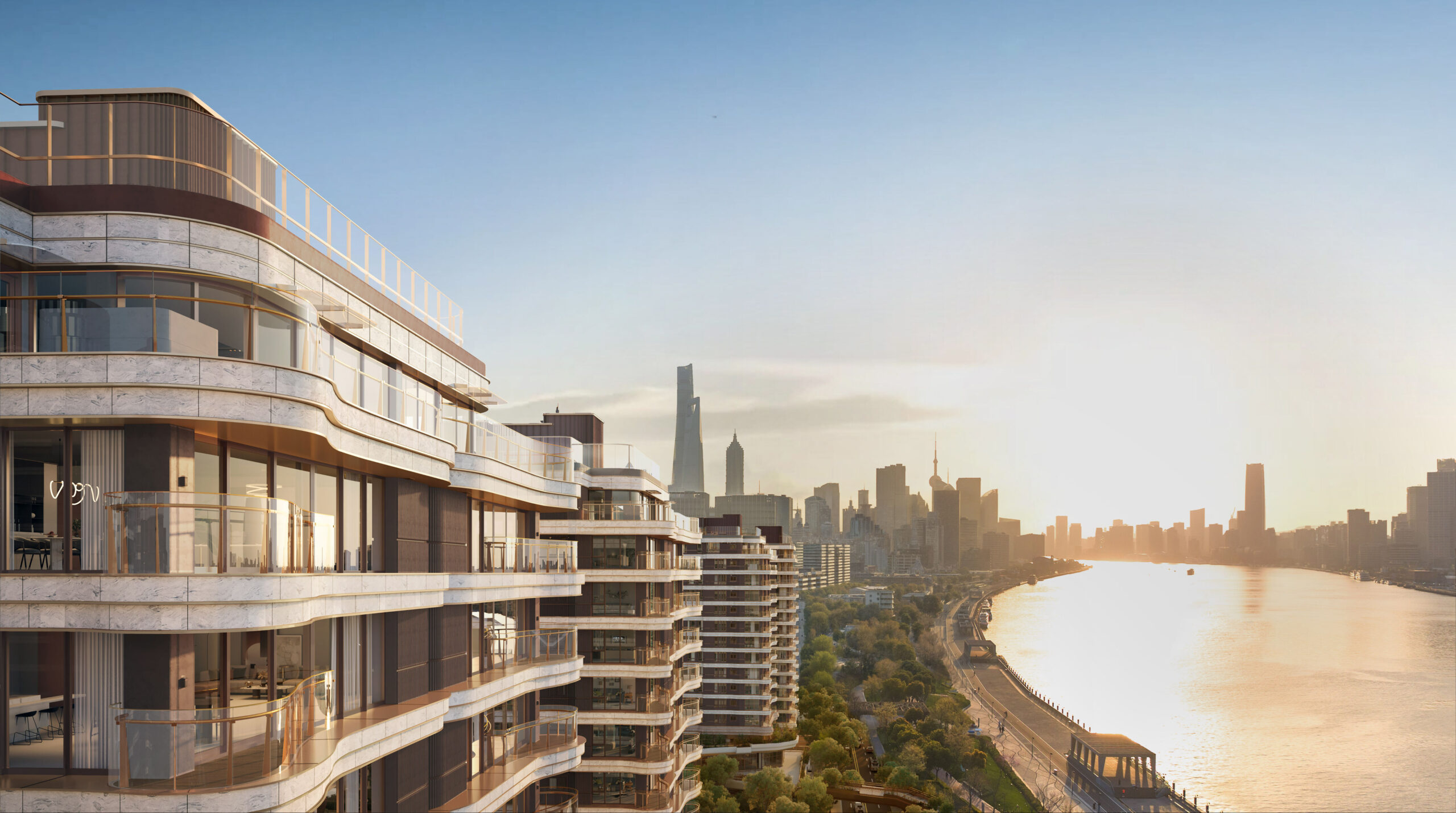

But, although he had clearly looked long and hard at architectural drawings from the Mannerist hands of Sebastiano Serlio to Jim Stirling’s late-flowering Post-Modern acrobatics, and though he had studied every last detail of inks, types of nibs, washes and the order in which they were applied, Bronstein couldn’t help “liking buildings that want to seem better than they are”. While there might be “no shame, no wrong” in the Baroque, the buildings themselves shone. Bronstein found himself revelling, a little perversely, in Post-Modernism, a form of “Cheapo Baroque” through which buildings that might otherwise be ignored were “glammed up, trying to be desirable. They represent human frailty. I had no love for Po-Mo per se, but liked its provocation.”

The Relocation of Temple Bar, 2009, Pablo Bronstein.
Photo by Andy Keate.
Both styles were unfashionable when Bronstein left art college. Both, though were concerned with creative play, and through reams of engaging ink and gouache drawings, set in equally playful frames, Bronstein has toyed with Baroque and Post-Modernism. Because he understands different architectural styles well – “when you draw, you think them” – he has the knack of creating witty, bizarre and provocative images of buildings or moments in imaginary architectural history that, at first glance, can seem quite real.
The Tate owns Bronstein’s Erecting the Paternoster Square Column (2008) depicting the raising of an improbably tall Corinthian column with ropes, winch and timber scaffolding as bystanders posture. The scene is set some three hundred years before the building of Paternoster Square itself, a Post-Modern farrago gift-wrapped around two sides of St Paul’s Cathedral. The drawing is exquisitely realised in ink, watercolour and graphite and finished with a faded yellow wash and patches of gum and resin to make it look very much older than it is.
It is a conceit, and this is Bronstein’s point. To him, the Paternoster Square project is “vacuum-moulded sort-of Baroque” and, all things considered, “a bit of a mess”. The artist’s drawing suggests what Paternoster Square would like to be. Piazza del Popolo it is not.
Bronstein’s drawings have stretched happily into set design, performance art and architectural follies including a beach hut “in the style of Hawksmoor”. Some of his drawing, meanwhile, are as wilfully funny as they are finely rendered like the voluptuously absurd Design for a Cake Basket and two Muffineers en-suite (2017) showing hugely exaggerated Baroque tea things sat like Humpty Dumpty on a Baroque bridge in some great Baroque square.

Design for a cake basket and two muffineers en-suite, Pablo Bronstein.
Courtesy Pablo Bronstein and Cristea Roberts Gallery, London.
Bronstein’s are ways of making artist and viewer think about the history and vanities of architecture as well as its pleasures and play. He reminds us of how architects of the calibre of Filippo Juvarra and Inigo Jones drew for the stage, for masques and operas, as well for memorable buildings in real streets and squares. These resourceful talents played the “high game” of architecture, a form of fecund play witnessed in designs as theatrical as Juvarra’s Baroque basilica, La Superga, on a hilltop outside Turin, Jones’s Tuscan-style “actors’” church in Covent Garden or, indeed, Pablo Bronstein’s Design for a Cake Basket and two Muffineers en-suite, which the artist’s grandmother would surely have loved.

Designs for the Ornamentation of Middle Class Houses, 2011, Pablo Bronstein.
Photo by Andy Keate.
This post forms part of our series on The Architecture Drawing Prize: an open drawing competition curated by Make, WAF and Sir John Soane’s Museum to highlight the importance of drawing in architecture. The deadline for entries for 2020 has been extended to 16 October.





